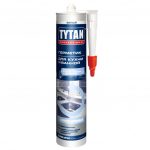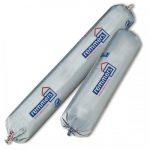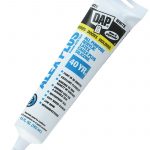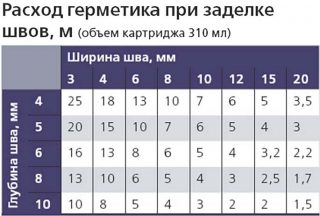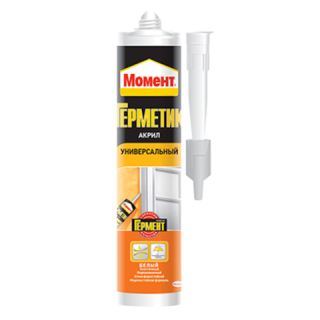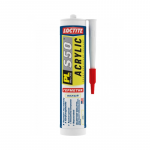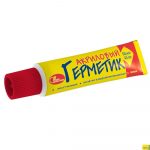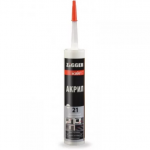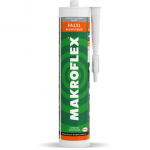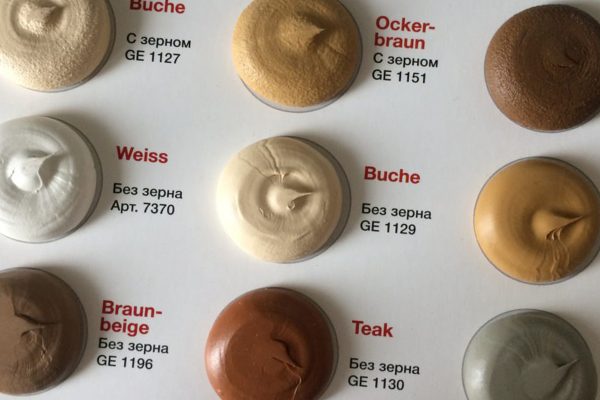Acrylic sealant is a means for insulating and sealing joints, joints and joints of moving parts. Several varieties of the composition are available, suitable for different work: in a damp room, on the street, for waterproofing structures.
Description of acrylic sealant
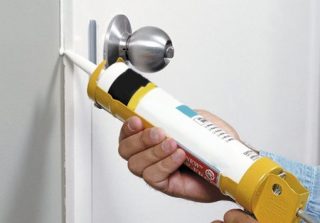
Acrylic sealant - organic materialdesigned for filling and sealing joints, joints, cracks, chips. It is based on polymethyl methacrylate... In addition to it, the sealant includes:
- plasticizers - substances that ensure the elasticity of the composition;
- primers - additives that improve the adhesion between the mixture and the surface material;
- vulcanizers;
- thickeners - substances that provide volume and strength when sealing joints;
- defoamers.
The composition of acrylic sealant is regulated by GOST. However, the manufacturer has the right to change it or modify it with their own additives, so the product may not be as high-quality as the standard suggests.
Most often, an additional ingredient is antiseptic substances... They prevent the development of mold and mildew, which is especially important for rooms with high humidity. The material is used for medical purposes, which indicates its harmlessness.
The composition is produced in cans and cans. The latter are equipped with a special nozzle with a spout, which fits the material supply.
Specifications
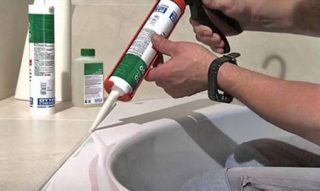
The characteristics of the joint compound depend on the composition of the product. However, all material modifications have some general properties.
- Elongation at the time of rupture - from 700 to 300%. Stretching up to this point does not affect the quality of the joint.
- Working temperature Range - -40– + 80 ° С.
- To apply sealant can at temperatures from -10 to + 35 ° С.
- Surface film, providing adhesion, is formed within 3 hours.
- Life timeguaranteed by the manufacturer - 20 years.

Varieties and scope
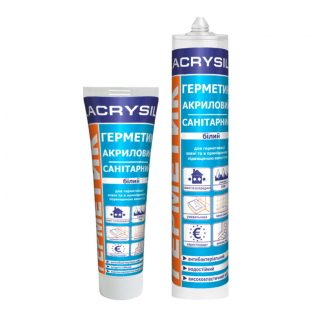
Sealants distinguish by the number of components... There are 3 types.
- One-component mixture - a ready-to-eat product. Refers to universal. The use of acrylic sealant is limited by humidity levels - from 60 to 70%. Most often used for sealing seams and joints. It attracts by the fact that it does not change the shade after drying.
- Two-component - requires preliminary mixing. However, the properties of the composition can be varied within very wide limits.
- Multicomponent - includes more than 3 ingredients. Most often these are professional special mixtures used in industry.
If the one-component composition is homogeneous, multicomponent includes various components. In everyday life, they most often deal with the following varieties.
- Silicone acrylic - a sealant with fungicides, intended for gluing smooth surfaces, such as plastic, but can also be used for processing porous materials. Differs in high elasticity and resistance to moisture. Insensitive to temperature changes, so it can be used on a balcony or loggia.
- Acrylic rubber - retains elasticity after drying and is able to compensate for volume changes. The material is often taken to seal the gaps between the bars and logs, applying it to the inter-row seal. Differs in high water resistance, is not afraid of ultraviolet rays.
- Latex acrylic - frost-resistant option, so it can be used for some external work. Such a composition is taken for sealing joints in wooden structures. The mixture is viscous, spreads little over the surface. Includes hydrophobic additives, therefore increases the resistance of wood to water and dampness.
There are also water-resistant acrylic compounds. They are applied on surfaces of a different nature: stone, concrete, wood, plastic. They usually include antiseptic additives to prevent mold growth. Indoor use is allowed.
Non-combustible formulations are available. Designed for sealing cracks and seams in wooden structures, as they allow to localize the fire in some way.
How to find out the consumption of sealant
Simplest - online calculator on the construction site. The user enters data on the width, depth and length of the seam, and the program calculates how much material is needed for this.
You can use special consumption tables sealant from the reference book. At the intersection of a column with a joint width and a row with a depth, the result is the consumption of sealant.
You can calculate manually... To do this, multiply the thickness, length and depth of the seam to find out the amount of glue. And then the volume of the tube is divided by the result of the calculations.
How to remove acrylic sealant
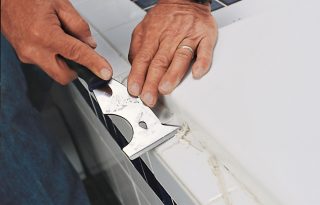
Concrete crack sealant can be removed in a variety of ways. It depends on the degree of curing of the material and its composition. Water-based mixture, if still available did not have time to freeze, can be washed off with a damp sponge. The waterproof one will have to be dissolved with a small portion of the solvent. To do this, a cotton swab is moistened in vinegar, gasoline, acetone and wiped the seam with it.
If the sealant managed to freeze, you have to make an effort. You can resort to the mechanical method. To do this, the remains are cut off with a clerical knife or removed with a hard wooden scraper. Do not use metal brushes or abrasive materials as they damage the surface.
Residues can be dissolved. White alcohol or acetone is applied to the hardened sealant and removed after a while. Since solvents are toxic, work is done with gloves and a mask.
Manufacturers rating
- Zigger Is a German company that produces compounds for interior work. For sealing joints in the floor or underlayment, a gray-colored compound or a wood-like shade is used. A white mixture is used to fill cracks in concrete walls.
- Henkel Is another German brand. Offers mixtures for inactive structures, characterized by high frost resistance and strength during hardening.
- Loctite - produces a huge range of acrylic sealants for household needs, for car maintenance, for professional repairs. All compounds have high adhesion and are used in the processing of stone, concrete, wood, metal.
- Markoflex Is a Finnish company offering acrylic-latex mixtures. The range includes mixes for interior and exterior use. The latter are distinguished by high frost resistance.
- Russian manufacturer "Novbytkhim»Produces sealant at the most affordable price. The compositions are waterproof and moisture resistant.
When buying a sealant, be sure to clarify its technical indicators. A brand provides product quality, but not versatility.
Selection recommendations
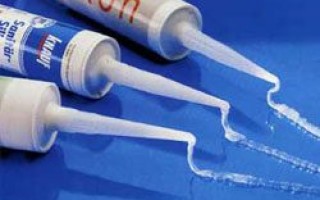
Sealing acrylic mixture is selected according to a number of characteristics. It is advised to pay attention to the following.
- Appointment - take into account not only the nature of the work - internal or external decoration; surface type - smooth or porous; its type is wood, metal, concrete, mobility or immobility of the connection.
- Operating conditions - for damp rooms, such as a bath or kitchen, a waterproof sealant with fungicides is required - it prevents the formation of mold. And for heated surfaces, they take fire-resistant compounds.
- Specifications - working temperature range, water resistance, permissible joint depth and width, terms of partial and complete drying. Even the method of application matters. It is inconvenient to close up thin seams and crevices with a mixture from a jar. More practical is a tube with a nozzle.
- Decorativeness - transparent and white composition is used for almost all types of insulation. However, many manufacturers offer sealants in different shades so that the color can be matched more accurately.

